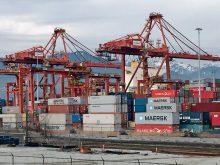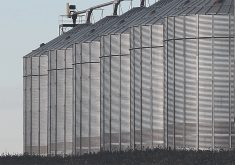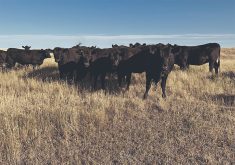REGINA — Thirty agricultural associations from across the country have urged prime minister Mark Carney to remember agriculture as his government focuses on strengthening the economy.
Organizations such as the Canadian Federation of Agriculture, the Canadian Cattle Association, Grain Growers of Canada, the supply managed associations and others offered four priorities on behalf of the sector, saying they want agriculture and agri-food treated as a strategically important sector.
In their open letter, called Let’s Grow Canada, the associations called on the government to:
- Create a focused plan for economic growth in the sector and support food security.
- Ensure regulations support growth.
- Prioritize transportation and trade infrastructure.
- Modernize risk management tools.
Federal agriculture minister Heath MacDonald’s recent meetings with investors could be a sign the government is already acting on the first request. He hosted a round table with Farm Credit Canada and several investors and and fund managers who are interested in agriculture and ag-tech.
Read Also

Canola oil transloading facility opens
DP World just opened its new canola oil transload facility at the Port of Vancouver. It can ship one million tonnes of the commodity per year.
On that point, the organizations said agriculture should be a national priority with clear targets for production growth, investment in innovation, value-added processing, exports and a stable labour supply.
Regulations should support growth “by aligning the mandate of key government regulators with Canada’s food security and agricultural competitiveness goals, and by reducing regulatory burden and making Canada a top destination for investment and innovation.”
Infrastructure that supports agriculture, including rail, port, cold chain and rural infrastructure, must be reliable, the letter said.
Risk management tools have to respond to current climate and market conditions, as well as ensure mitigation measures are in place to support ongoing trade and climate disruptions, it said.
CFA executive director Scott Ross said during a webinar that the organizations understand the substance underneath each priority, but there are inherent differences in infrastructure needs of each sector.
“I’m not going to be naive enough to suggest that everyone is going to come together and agree to forego their own priorities on infrastructure and let others get what they’re looking for,” he said.
“However, I do think that … some of the critical infrastructure that’s needed benefits wide swaths of the industry.”
Ross said port capacity, western rail bottlenecks and underused assets such as Prince Rupert should be looked at from the resiliency lens.
However, he said Canada is at a unique moment and there is an understanding that agriculture is better served by coming together under a common umbrella, sharing information and respecting the slight differences among sectors.
CCA president Tyler Fulton said the organization was proud to join others in calling for agriculture to be an economic priority.
“There is a lot of opportunity to work together to see economic growth for the beef cattle sector, diversify our trade and build a profitable and sustainable industry for farmers and ranchers now and in the future,” he said in a statement.
“The world needs more Canada, and working together, we can grow the herd and the Canadian economy.”
The letter was designed to elevate the government’s understanding of agriculture’s importance and how it aligns with the economic agenda.
It notes that Canada’s agriculture research and development spending fell from $0.86 billion in 2013 to $0.68 billion in 2022, putting the country last in the top seven Organization for Economic Co-operation and Development countries.
The organizations warned Canada risks falling permanently behind in a sector that is critical to food security, domestic and export growth and economic resilience.
Agriculture contributes about $150 billion annually to the gross domestic product and employs 2.3 million people, which are more than the automotive, forestry, steel and aluminum, and oil and gas sectors combined. It is the largest manufacturing sector in the country.
The signatories said other countries are making bold investments in agriculture, but Canada has been slow to respond.
“We are seeing this play out as Canada’s global market share in agriculture has fallen by 12 per cent since 2000, while competitors like Brazil and Australia have gained ground in fast-growing markets. At the same time, our average annual productivity growth has slowed from 2.2 per cent in the early 2000s and is projected to drop to one per cent by 2030,” it said.
To change course agriculture must be a national priority, backed by meaningful investment and co-ordinated federal leadership, it said.


















